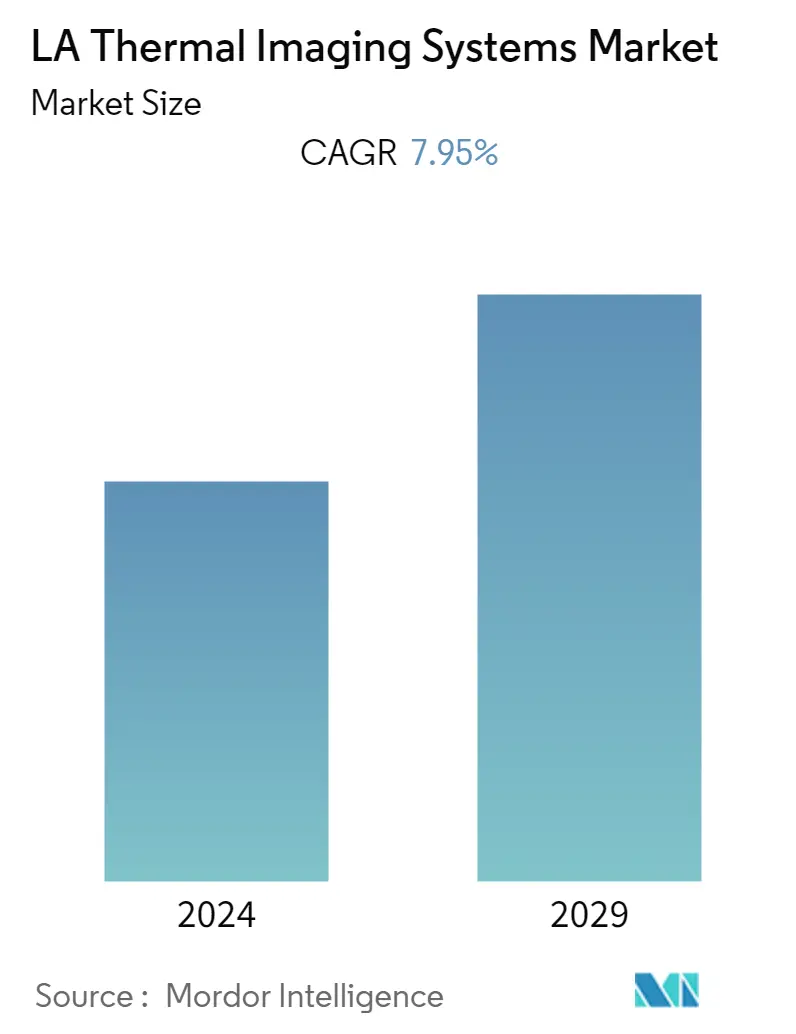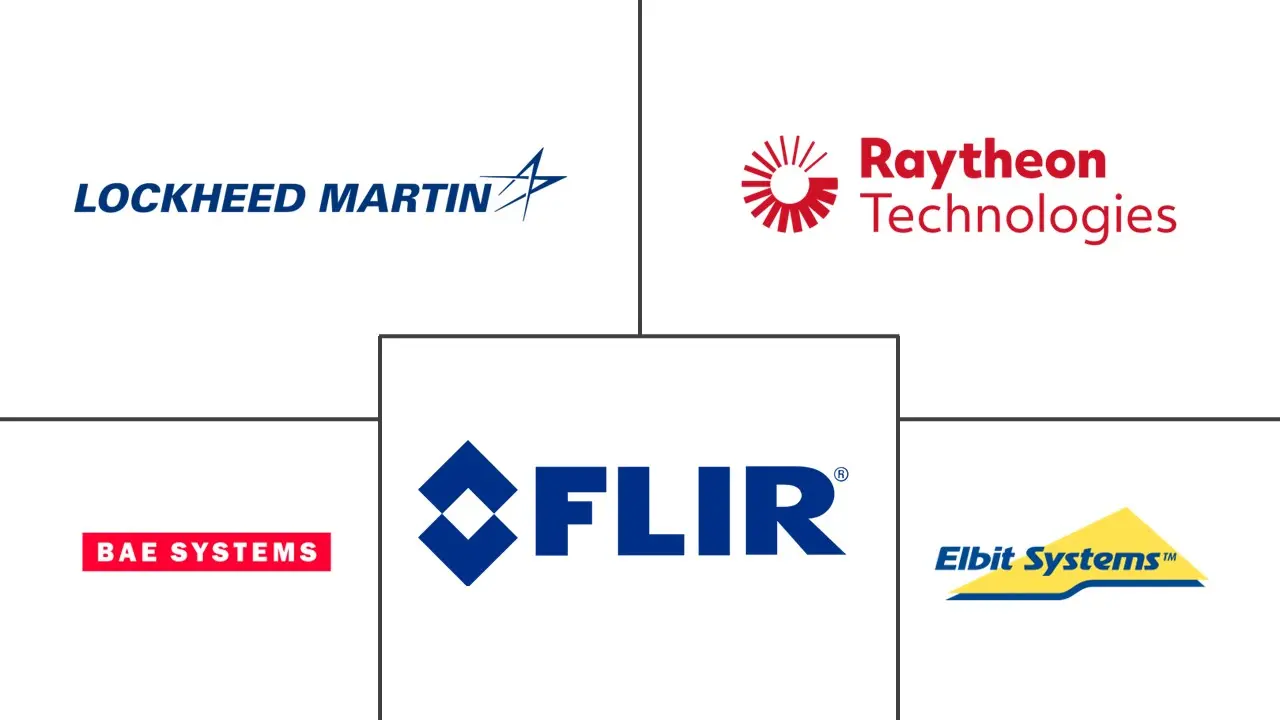Market Size of LA Thermal Imaging Systems Industry

| Study Period | 2019 - 2029 |
| Base Year For Estimation | 2023 |
| Forecast Data Period | 2024 - 2029 |
| Historical Data Period | 2019 - 2022 |
| CAGR | 7.95 % |
| Market Concentration | Medium |
Major Players
*Disclaimer: Major Players sorted in no particular order |
Need a report that reflects how COVID-19 has impacted this market and its growth?
Latin America Thermal Imaging Systems Market Analysis
The Latin American thermal imaging systems market is projected to record a CAGR of 7.95% during the forecast period. The market is expected to grow steadily due to the increased thermal camera usage across various industries, including aerospace and defense, automotive, healthcare and life sciences, oil and gas, and food and beverage.
- Most companies have miniaturized IR and thermal imaging sensors due to technological advancements, making them highly efficient, thereby raising their ease of use. Handheld IR and thermal imaging systems gain traction for their portability and find applications in various enterprise verticals, such as hospitals, saving repair times and heating costs.
- For instance, in March last year, Swift Medical, the global player in digital wound care technology, unveiled the Swift Ray 1, a game-changing hardware device that wirelessly attaches to a smartphone camera and captures detailed clinical data to aid in the assessment, treatment, and monitoring of skin and wound conditions. The Swift Ray 1 is small enough to fit in a clinician's or patient's hand, making powerful medical imaging obtainable anywhere, from the hospital to the patient's home. Because of this advanced imaging, accurate clinical data can be collected for every patient, regardless of skin tone, making wound care more equitable for all.
- In addition, thermal cameras are used in clinical thermography to identify cancer, infections, traumas, and vascular disease at an early stage. Thermal cameras create pictures depending on how much heat the human body radiates, making it one of the greatest preventative health screening approaches. As a result, the thermal imaging market will likely grow as prospects for thermal imaging in healthcare applications expand.
- The countries in the region are aggressively investing in their military for various reasons. Many Latin American countries are expanding their military budgets, including border management, anti-piracy procedures, and combatting organized crime and drug cartels. Thermal imaging aids armies in different ways, including tracing minor signs near borders, whether on land or sea.
- In addition, according to the SIPRI, military expenditure in Mexico increased to USD 8680.80 million recently compared previous year's recorded USD 8044.90 million. Mexico aims to increase the militarization of civilian activities, ranging from national parks to domestic anti-crime operations, with a plan under the premiership of President López Obrador to bring the country's National Guard under military control. Such activities may further create demand for thermal imaging systems in the region.
- Many players in the market are continuously developing innovative products that may drive market demand. For instance, in November last year, FLIR announced its new thermal camera, FLIR One Edge Pro. It has been launched as an upgrade to the existing FLIR One Edge. It can easily be attached to the smartphone's rear panel, eliminating the need to connect the lens to a smartphone to get output. It also includes an MSX mode, which overlays image data from the visible camera to make thermal images simpler to read. There have also been some software enhancements.
- The FDA published the Enforcement Policy for Telethermographic Systems During the Coronavirus Disease 2019 (COVID-19) Public Health Emergency guidance to help expand the availability of thermal imaging systems and mitigate thermometer shortages during the public health emergency. The guidance sets forth an enforcement policy intended to apply to all thermal imaging systems designed for medical purposes during the public health emergency related to COVID-19.
